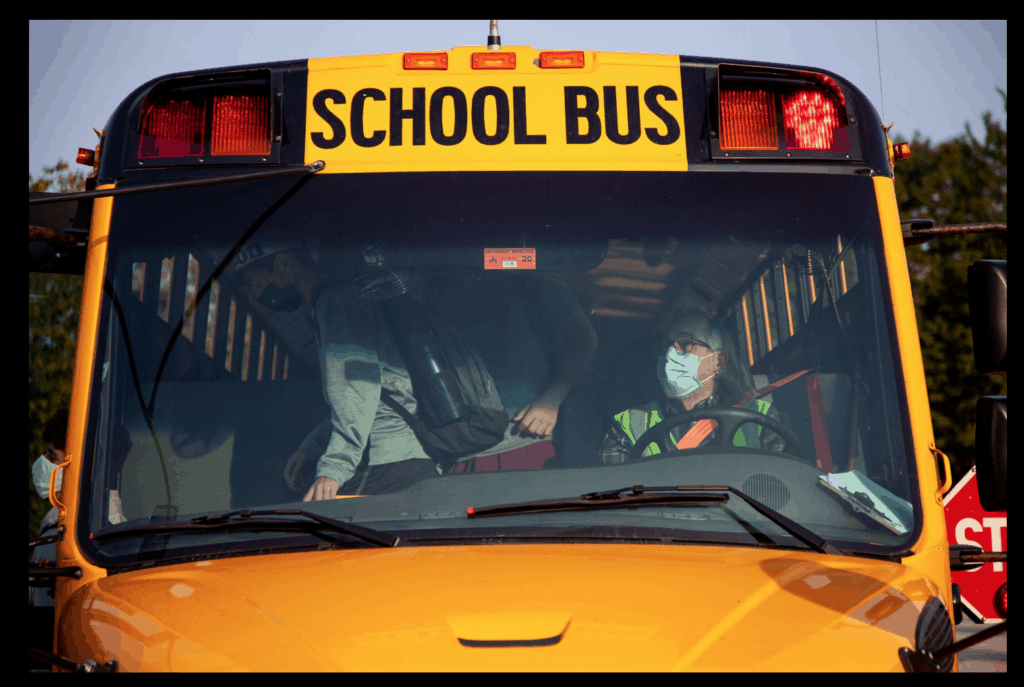
By Katy Savage
High school games have been underway since Gov. Phil Scott announced schools could enter phase three of reopening on Saturday, Sept. 26, but the atmosphere is different.
There are no award ceremonies or concession stands and there are less student spectators as districts follow the state’s 150-person limit on group gatherings. Some teams aren’t using buses for transportation and most athletes are required to wear face masks while they’re playing.
Woodstock Union High School cross country coach Martha Perkins said there’s less enthusiasm this year.
“You don’t have the same feel,” Perkins said. “Everything seems in slow motion.”
Large cross country meets have been canceled, limiting the team to compete at smaller, local meets.
“It’s a little like we’re training for health,” Perkins said, as opposed to training for competitions.
Each sport team has had to make modifications this year. While the Woodstock cross country team has only been allowed to bring eight athletes to certain events, football teams are only allowed to play seven-on-seven touch football.
“It was very different,” Woodstock varsity football coach Ramsey Worrell said of the season’s first two games. “It really doesn’t feel anything like being back.”
The Woodstock football team played its first games last week. Worrell didn’t know the score of the games, explaining keeping track was confusing with the seven on seven play, but he said the team lost both games.
“It’s like two games within a game,” Worrell said of the new format. “It feels good to be there doing something, but it doesn’t feel like we’re back.”
The Rutland High School football team held a home game against Mount Anthony on Oct. 2, winning 6-0. Like other school districts, spectators were limited to two people per athlete, which was much less than the typical football game, which can attract about 1,000 people.
“I think (students) are just grateful they have an opportunity to get back to what they do,” said Mike Norman, the football coach and athletic director at Rutland High School. “It’s a credit to everybody’s hard work, trying to allow things to happen.”
Teams are following the state’s guidelines while taking their own precautions.
Hartford High School boys soccer coach Kevin Guilbault said students can no longer huddle for pregame and half-time chats and all soccer players have to wear masks while they’re playing.
“The biggest thing for me is to try to keep them socially distanced when they celebrate a goal,” Guilbault said.
Aidan Brooks, a senior captain of the Hartford High School boys varsity soccer team, said he’s excited to be playing again despite the challenges.
“The biggest change is the masks,” he said. “Everyone still has the same mindset of winning and going out there and competing as hard as we can. It’s disappointing not to have a regular season. I’m just very thankful to be out there.”
More in-person learning
While some districts aren’t making any changes, others are slowly bringing students back to more in-person instruction. Phase three allows school districts more freedom to use gyms and cafeteria spaces.
At Rutland Northeast Supervisory Union students began the year with only K-2 students at school. Those students went five mornings a week with third to 12th grade students doing full remote learning. Starting this week, third and fourth grade students will join the younger students in school five mornings a week. In-person instruction for K-4 students now extends from 8 a.m. to noon.
Two schools in the district, Lothrop Elementary and Leicester Central, have allowed fifth and sixth grade students back in the classroom for morning instruction. Starting Oct. 12, Otter Valley Union High School and fifth and sixth grade students at Neshobe Elementary and Barstow Memorial School will start a 50% hybrid model, with two days in the classroom and three days remote.
On Oct. 19, the entire RNESU district will move to a Wednesday remote learning day with K-4 students in all schools attending in-person instruction full day (mornings and afternoons) on Mondays, Tuesdays, Thursdays and Fridays.
White River Valley Supervisory Union is making similar changes. Starting Oct. 19, students in grades K-8 will have in-person instruction from 8:30 a.m.-3 p.m., instead of 8:30 a.m. to 1:30 p.m. Meanwhile, White River Valley high school students, who have been going to school two days a week, will start going to school four days a week, with a Wednesday remote day.
White River Valley Superintendent Jamie Kinnarney said the transition to less remote days in mid-October has been a plan since the start of the year.
“We’ll continue to monitor data,” he said.
Some education leaders aren’t ready to make any changes yet.
“We will remain status quo and reassess after four weeks in stage three,” said Slate Valley Union Superintendent Brooke Olsen-Farrell said. “It’s complicated to move back and forth between stages.”
Rutland City Public Schools Assistant Superintendent Rob Bliss echoed Olsen-Farrell.
“Things are going really smoothly right now,” said Bliss.
Most school districts are still using cafeteria and gym spaces as storage or extra educational space while students eat lunch in their classrooms.
Windsor Central Supervisory Union Superintendent Sherry Sousa said there were no immediate plans to make changes to protocols.
“Our programs and use of school spaces has not changed since the start of the school year,” Sousa said. “We will be reviewing this as a Leadership Team and surveying parents, faculty and students in the next week to identify next steps.”
Claire Kershko, the head of Killington Mountain School, also said the school’s made no changes under phase three.
“We are still playing things safe and sticking largely to our initial reopening plans,” she said.




